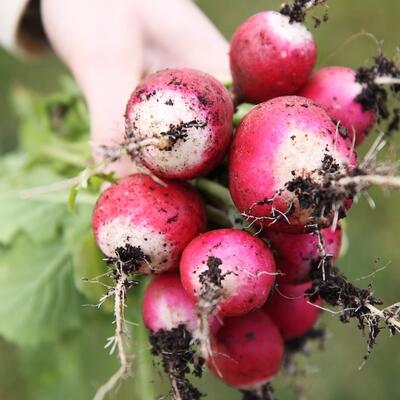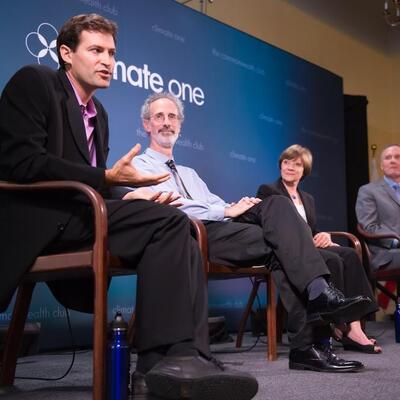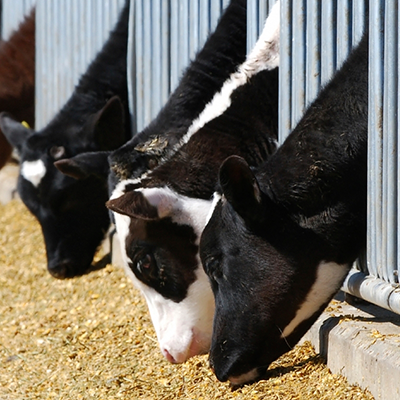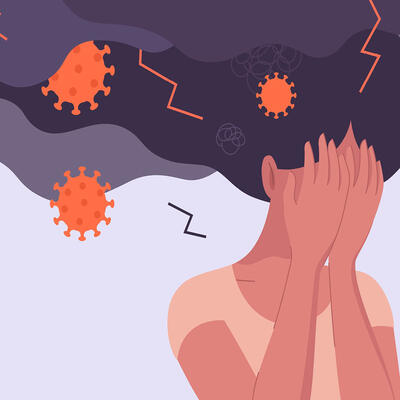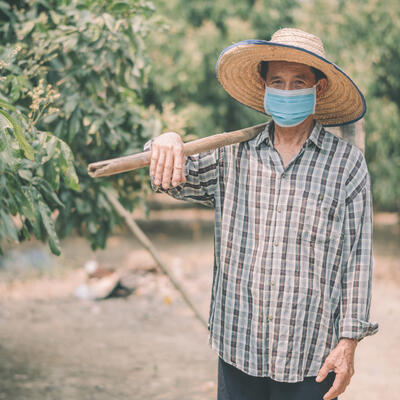
COVID-19 and Climate: Implications for our Food System
Guests
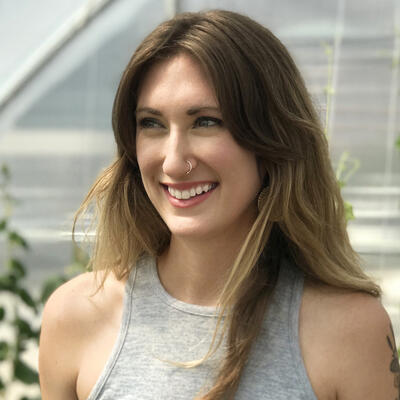
Lisa Held
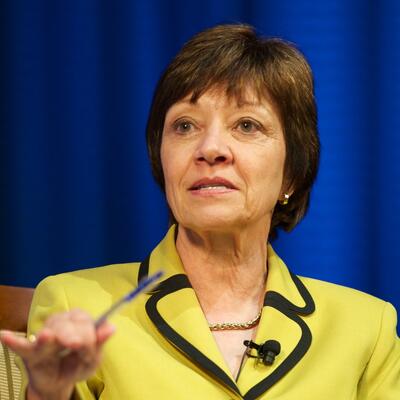
Karen Ross
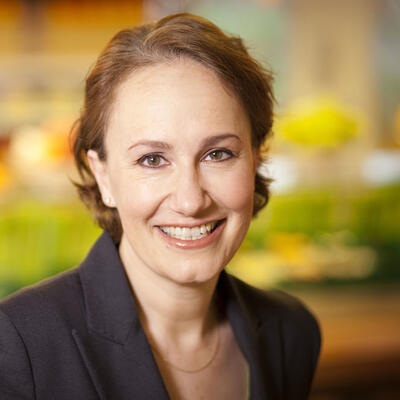
Helene York
Summary
COVID-19 has disrupted every aspect of our lives and economy – perhaps none more than our food system.
“Slightly more than 50% of our food dollars is spent out of the home,” says Karen Ross, Secretary of the California Department of Food and Agriculture and former Chief of Staff at the U.S. Department of Agriculture. “When you think about 50% of the market immediately being shut down, that’s a huge thing to try to absorb.”
With restaurants devastated, food workers either unemployed or vulnerable, and trips to the grocery store now highly-planned ventures into risky territory, the pandemic is having a broad impact on the way food is produced and consumed.
“Farmers saw a lot of increased demand from consumers who are home and wanted food at home, direct to consumer,” says Lisa Held, Senior Reporter with Civil Eats, who covers the meat industry and other aspects of agriculture.
“A lot of farmers went totally online, which was very effective, but requires extra labor, extra packaging -- just so much time essentially creating a whole new business model at the time when you're transitioning into harvest season.”
Helene York, who was an executive at companies that run food operations on corporate and college campuses before becoming a Covid layoff herself, admires the way many food producers have been able to pivot. But she also laments the lack of coordinated federal response to the pandemic.
“We all know some very good public servants in the USDA and many of them had their hands tied,” she says. “There could've been a 10 time improvement [in] efforts on how we support eaters as well as producers that could've come from more focused planning from the USDA.”
Additional Speakers:
Shay Myers, CEO, Owyhee Produce
Gabriel Morales, Program Director, Brandworkers
Related Links:
Brandworkers
California Department of Food and Agriculture
Civil Eats
Owyhee Produce
Culinary Institute of America
This program was recorded via video on July 30, 2020.
This program was a part of our special series, COVID-19 and Climate. You can listen to the other episodes with the links below:
COVID-19 and Climate: Human Response COVID-19 and Climate: Implications for Public Health COVID-19 and Climate: Economic Impacts COVID-19 and Climate: The Future of Energy
Full Transcript
Greg Dalton: This is Climate One. I’m Greg Dalton. [pause] The covid pandemic has disrupted every aspect of our lives and economy – perhaps none more than our food system.
Karen Ross: Slightly more than 50% of our food dollars is spent out of the home. So when you think about 50% of the market immediately being shut down, that’s a huge thing to try to absorb.
Greg Dalton: Food producers had to pivot quickly.
Lisa Held: Farmers saw a lot of increased demand from consumers who are home and wanted food at home, direct to consumer.
Greg Dalton: So will COVID-19 change our food system for good?
Helene York: 15 years ago the idea of the food system contributing to climate change -- what are you talking about, deer in the headlights. Now I just hope we get there fast enough.
Greg Dalton: COVID and Food. Up next on Climate One.
---
Greg Dalton: What will COVID-19 mean for agriculture, our food supply systems — and our diets? Climate One conversations feature energy companies and environmentalists, Republicans and Democrats, the exciting and the scary aspects of the climate challenge.
Greg Dalton: Devastated restaurants. Unemployed and vulnerable food workers. Risky trips to the grocery store. The coronavirus has disrupted every aspect of the food industry.
Helene York: I'm no longer an employee of a really large food service company because I'm a COVID layoff myself.
Greg Dalton: Helene York was an executive at companies that run food operations on corporate and college campuses, and currently teaches in the Food Business School at the Culinary Institute of America. She’ll join us to talk about the food and climate implications of the pandemic along with Lisa Held, Senior Reporter with Civil Eats, who covers the meat industry and other aspects of agriculture. And Karen Ross, Secretary of the California Department of Food and Agriculture and former Chief of Staff at the U.S. Department of Agriculture. First, a trip to the farm.
Greg Dalton: Shay Myers calls himself a third-generation farm kid. His company Owyhee [oh-WHY-hee] Produce grows onions and other crops on the Oregon-Idaho border. And like thousands of farmers he was caught off guard by the drastic effects that COVID-19 had on his business. Climate One’s Andrew Stelzer asked Myers to talk about what he's been through and how he’s trying to adjust his business model for this new reality.
[Start Playback]
Andrew Stelzer: As 2020 began business was good at Owyhee. Over the past few years their customer base had been growing. And with 1,200 acres of onions Shay Myers says everything was running pretty smoothly.
Shay Myers: In February and really in March is when we started to feel with the COVID the impact for us was initially a whole bunch of purchasing. A lot of people went to the grocery store and they wanted to stock up and onion is one of those things that’s not gonna go bad like a banana in three or four days. And so in lieu buying bananas people were buying things like onions and potatoes and carrots and, you know, some of these hearty vegetables. And initially we saw a spike 40% probably increase in total sales. Even though we lost 80% of our food service business the retail side just picked up significantly. So the month of March was very, very heavy sales followed by some of the lowest sales that we've ever seen. I mean like an 80% swing. We were only selling 20% of our normal volume. It’d have to be in mid - March mid-to-late March when we finally decided that we were not going to have a home for some of our onions. We basically dug compost pits, you know, brought an excavator in and started dumping those onions.
Andrew Stelzer: Myers had to dump about 6 million pounds of onions costing his operation about $800,000. Lucky for him his other crops like asparagus and sweet potatoes don’t rely on the restaurant business and retail sales of those veggies hasn't taken much of a hit. Selling small direct to consumers has actually thrived in the COVID era. Myers says he and other area farms have been scrambling to adjust.
Shay Myers: The Farmers to Families Food Box Program by the USDA, I will say that program has worked and that has gotten dollars to the farmers and supported, bolstered the market in a way that I didn't think that it would. And I also think there are some significant ramifications that are positive. How many people are now getting fresh produce at home that really never got it there before and weren’t eating it before and did not know how to cook with it before. There were a lot of my competitors here that sold only to restaurants or in a roundabout way they sold to distributors that sold to restaurants or only sold to processors. Those are the two places that were most significantly impacted and therefore they had the most product that had to be disposed of. A typical onion is sold in a 50 pound bag believe it or not. The other way to sell and the way that the consumption switched was to 2, 3 and 5 pounds bags of onions. We grow in Idaho and Oregon and in California and our California operation we were planning on doing 0, 3 pounds bags. No consumer bags none of that. And we ended up taking all of our equipment from Idaho moving it to California and installing it there to be able to do those 2, 3 and 5 pound bags.
Andrew Stelzer: Looking ahead Myers says his big worry is next season. Despite an uncertain future he had to plant his next crop of onions back in April.
Shay Myers: We look at restaurants and the closure rate. Some estimates are putting the closures of restaurants at 50%. Are we simply all going to visit the remaining restaurants more and therefore consumption the same or will we visit those restaurants the same as we always did, and consumption will then be reduced. And it’s gonna take probably two years I would argue from the time that this pandemic began before those numbers have resettled and the dust is settled and we can try and improve our practices.
[End Playback]
Greg Dalton: That was Shay Myers of Owyhee Produce on the Oregon and Idaho border. Karen Ross, a lot in there just gut wrenching dumping 6 million pounds of onions. A lot of waste. Tell us the stories you see and go back to that early March there’s a lot in there. I’d like to get your response to that.
Karen Ross: Sure. So the abruptness, you know, to shut down the economy that abruptness is what really cause this distribution channel challenge that we had. And Shay talked on several things. One is that with food service do you people realize that today slightly more than 50% of our food dollars is spent out of the home. So it’s at school cafeterias, campuses, conventions, hotels and restaurants. And so when you think about 50% of the market immediately being shut down, that’s a huge thing to try to absorb. And what he talked about is what we saw here in California. If the product was one that could be repackaged it was but that requires equipment and people and training. If your whole business model was around the retail sales you don't necessarily have keep to the service and vice versa going from food service to immediately going into that retail type of setting. So that’s what we saw in some of the instances of some of the food is that they’re just trying to adjust as rapidly as we possibly can and trying to figure out is this gonna be worth it like they made a determination very early. It's worth it for us to bring the equipment from Idaho to California. But, you know, in a dairy when one whole line is that packaging for school food lunches and you don’t know if those kids are still gonna be able to get those lunches immediately we didn’t know if we’re gonna be able to distribute that. Those are the things that cause the disruptions that cause those issues of having to plow under, turn in to compost or dump milk. But people quickly pivoted so we didn't have to continue that. And because we had an existing program and partnership with our California Association of Food Banks we have a long-standing program more than 15 years old of farmers being able to call up the food bank and saying, I've got product and we've been able to do fresh produce in our food boxes in California over this long period of time. And when we have surplus we've been able to send it through partners with Feeding America to get California produced to other places. So having the USDA program come in that’s been a wonderful thing because they're buying at a market price where our state program is just helping to pay for the harvest. So we’re seeing that between the two programs we really been able to address the food waste issue in particular. I do have to say that the early calculations for financial losses to farmers are minimum of $2 billion and that the total estimation could go as high as $8 billion for just the financial losses that’s been absorbed.
Greg Dalton: Helene York, your phone started ringing in March. People were calling you when the COVID crisis really started to unfold. Who called you and what do they want?
Helene York: Well, I worked at the time with a national contract food services company. That’s the other half that Karen was referring to. We run restaurants and corporations others in the field colleges, museums and so forth. And what that means is we are providing food for employees of those companies. It is a really, really large sector of the restaurant industry. And we shut down 100 restaurants over the course of 10 days which was enormous and more came. And so we had built over 20-year period relationship with some of the smaller farmers and their cooperatives. And especially in Northern California and Southern California and they had become dependent maybe or another way of saying is they had a very good relationship with the chefs at our restaurants that bought their produce. And this was March when the harvest were just beginning I mean the crops that were planted in January were just available and they were just about to sell they had gone through sort of a two or three month period where they hadn’t been selling that much because of the cold weather they were gonna make their spring harvest dollars. And all of a sudden we were shut down. And so we tried to work with Feeding America with Project Open Hand with Chefs to End Hunger where we have a partnership really for prepared food. So at the end of the lunch service there's always some food left over and so we donate it to places that serve prepared food. But honestly we couldn’t satisfy the demand of the local farmers the way we could when the restaurants were open. We didn’t have an unlimited supply of money to just buy things and donate them. And so we encouraged a number of our managers who were still employed by our generous clients to set up community supported agriculture boxes. And that was a way to support the farmers they had to pivot they had to go from packing those 50 pounds of product that they would send to a contract restaurant or an independent restaurant and now they had to put them in boxes. And you can't give local people a box of 10 pounds of onions they can’t afford it they can't store it, you know, you have to then build a whole new process as some of these farmers did. And I applaud them but it was tough going for a long time.
Greg Dalton: Lisa Held, you’ve written about the local food revolution moved and how some small farms adapted and pivoted online as well as the food hubs that did a good job. Tell us about that reporting you did.
Lisa Held: Sure. So I think we’ve been reporting on how COVID-19 has affected the food system at Civil Eats since the beginning. And everything that Karen and Helene just said and everything Shay expressed really, you know, we've been talking to farmers all over the country who had similar experiences. And in terms of these small farms down to local and regional markets it depends on where you are in the country and what you sell and a million factors. There's certainly a lot of diversity but one thing we definitely were seeing across the country that farmers saw a lot of increased demand from consumers who are home and manage through their home direct to consumer. But the problem is you can't just pick up and bring them for you need a marketing channel. And actually depending on where you are in the country farmers market some of them shut down some of them stayed open and farmers were packaging things differently and doing no contact pickups. But it really just depended on where you are in the country. So a lot of farmers went totally online, which was very effective but requires extra labor extra packaging. Just so much time essentially creating a whole new business model at the time when you're transitioning into harvest season. So just a lot of adjusting and pivoting and I mean surprisingly so many of these farms though got their CSAs online and had 300-person waitlist and are fulfilling all these online orders doing at home deliveries doing pickup sites and really in some way it seems like getting more of this local food to more families than they were before.
Greg Dalton: Helene York, you said that some of the waste happened early and that didn't have to happen or could have been different if the federal government had a different response.
Helene York: Well, it is well-known that there was a plan that the administration could have use to react to COVID that the administration didn’t use. And certainly we all know some very good public servants in the USDA and many of them had their hands tied. There could have been a lot more support for farmers of all different sizes to really help them pivot sooner and also to store a lot of their whether its grains or crops store things in cold storage or frozen storage there wasn't the coordinated effort. While I agree with Shay that the program that he has been a part of has been a godsend to a lot of producers as well as a lot of consumers. There could've been a 10 time improvement efforts on how we support eaters as well as producers that could've come from more focused planning from the USDA.
---
Greg Dalton: You’re listening to a Climate One conversation about Covid and the food system. Coming up, how food workers are often overlooked by OSHA and other government agencies.
Lisa Held: They've now issued four citations in response to almost 8,000 complaints. So that’s a lot of worker complaints that are coming in and very little action in terms of what's being done to protect these workers.
Greg Dalton: That’s up next, when Climate One continues.
---
Greg Dalton: This is Climate One. I’m Greg Dalton, and we’re talking about COVID and our food system with Karen Ross, Secretary of the California Department of Food and Agriculture. Lisa Held, Senior Reporter with Civil Eats. And Helene York, Professor at the Food Business School of the Culinary Institute of America. Consumers often think about the impact of food on their body and the environment, but workers who produce that nourishment don’t always get the same attention. Gabriel Morales is Program Director at Brandworkers, an organization in New York City focused on empowering workers in the local, organic and specialty food industry. He describes how workers preparing premium products are faring under covid conditions.
Gabriel Morales: Very specifically the workers that we’re organizing alongside are artisanal bread makers. That’s a group of workers that is at the factory at 5:00 AM. It’s an industry that’s largely worked by Black and Brown immigrant workers of color. There’s about 55,000 food manufacturing workers in New York City right now. We’re talking about 70, 80, 85% layoffs in some of these factories. And so the pandemic isn’t the first emergency that these immigrant workers have been fighting. Like workers have for years been fighting systemic inequality through lower wages through outright wage theft. They face higher rates of injury they face more reported instances of sexual discrimination and sexual harassment. And the devastating effects of U.S. immigration policy which under the Trump administration has worked diligently to break up families and break up immigrant communities. And so the coronavirus has really magnified those problems and the results have been absolutely devastating to immigrant communities. And those workers are excluded they were excluded from the stimulus package from earlier in the year and so we've had to come together as a immigrant rights community across New York City and across the country to fight for policies that help bring those workers into some, give those workers some of the help that they desperately need.
Greg Dalton: Are there examples of companies that have risen to the moment that have done the things you're asking for, you know, four weeks of paid sick leave pandemic pay or hazard premium protection from retaliation against workers who raise health concerns. Are there some examples of companies that have really risen to the moment?
Gabriel Morales: There are companies that have risen to essentially a bare minimum but in terms of like what brand workers is actually looking for more workers which is being able to have the power to have a voice on their own job and to talk about the things that they want -- no, no companies have risen to this moment. We want for people to know what it is that you can do both to plan before and after campaigning that workers can do both before and after an emergency hits. Like people need support for mental health and trauma people need to understand like how to build infrastructure in immigrant communities and then importantly, how do you help communities raise funds to help mitigate some of the worst outcomes of people being unemployed for who knows how long people gonna be unemployed. And so we want to help organizations do that work and so we are helping to train organizations and to train individual community members to prepare themselves for emergencies like COVID-19.
Greg Dalton: Gabriel Morales with Brandworkers, thanks for sharing your insights on Climate One.
Gabriel Morales: It's a pleasure to be talking to you.
Greg Dalton: Karen Ross a lot in there about workers that's one region, one part of the worker food chain. And we have an American food system that’s built on low-cost, low price and that really is kind of in some ways on the backs of workers that aren’t paid very much. Your thoughts on what you heard?
Karen Ross: Yeah, so efficiency and just-in-time delivery is really driving a lot of what the current system is about. And it's taken a while to really raise these kinds of equity issues but now they are front and center. And obviously from day one the concern about our essential workforce because agriculture is part of the critical infrastructure. There were things to work through like just the list of which jobs are all jobs, you know, essential. And then the conflicting messagings that are coming out like the Bay Area was the first one to do such a complete shutdown. Well we had workers who were going to dairy processing plants or food processing plants that were being stopped. And you can imagine you're going into the swing shift or the late night shift at one of those lines and you got stopped by local law-enforcement and you don't know what you’re being stopped for. That’s a heart-chilling experience and then that creates the fear factor throughout the community. So it took a good week to 10 days to make sure we had everybody equipped with cards to say I'm going to my job, I’m essential worker just ironing out those kinds of things. But then we knew that if this continues when we get the surge of seasonal work that has to happen where farmworkers will be moving around more. And when we started to talk about reopening the economy the concern about how do we keep everybody safe so that we don't have a cycle that we’re seeing right now. You're coming into work and are you being exposed there and taking it home or you might be in a congested house situation or your culture is that you have multi-generations living in the same household. How do we prevent if either coming into the workplace or from the workplace going home and the broader community spread and our rural communities were about family. We have social gatherings we have birthday parties we have Sunday afternoon barbecues. And how do you tell people family is everything welcome from a distance and some of that messaging just has not been complete. Or it hasn’t been culturally appropriate and really sensitive to the norms of how we live and work in rural communities those are still lingering issues and that's part of the strike force that the governor announced for the Central Valley. We have high numbers in the Central Valley it’s coinciding with big harvest and big cultivation activities and opening up of food processing plants. So we’re gonna be partnering in the Valley in a very strong way to see what we can do to re-bend the curve back down to where it needs to be.
Greg Dalton: Lisa Held I’d like to hear your reporting on farmworkers and some of the big questions now is the big meat packing stories seemed to have been stabilize. What are some of the big questions now regarding protecting the workers who provide our food to us?
Lisa Held: Yeah, I mean I think, you know, Gabriel said something that really stuck with me, which is these issues were already there and the pandemic really shed light on them. Which you know exploitative practices with regards to workers, especially in meat packing plants is causing these outbreaks to be much worse than they need to be and companies have been really slow to react. So, for example, really fast line speeds in meat packing plants that are dangerous for workers and other ways also mean that thousands of employees are crowded together and cannot possibly socially distance. And, you know, low wages like benefits as cases were increasing instead of guaranteeing paid sick leave companies were offering bonuses to employees to not miss a day of work, which obviously provides an incentive for them to come in sick, especially when you don't have an income that can support you. And it was clear very quickly that big companies like Tyson and Smithfield and JBS were not doing a lot to institute protective measures until after major outbreaks had occurred. And you know, there was that period I wanna say it was like April, May where a lot of meat packing plants were shutting down and there were all these hogs that had nowhere to go and it felt like this real breakdown. And like you said, it does feel like that has stabilized but I want to be clear that people are still getting sick and you know the latest numbers from the Food and Environment Reporting Network on meat packing workers 38,000 cases estimated and 171 deaths around the country. And those numbers are still increasing. And we talked about the USDA earlier and I reported a story on a different agency OSHA. And they’re the federal agency tasked with protecting workers on the job and this is in mid-June but not much has changed. They’ve issued voluntary guidance for employers in response to worker complaints about not being provided with PPE not being able to socially distance. In the majority of cases, the agency is just advising businesses of that guidance rather than doing on-site inspections. And, you know, when I did my story they had issued one citation in response to more than 5,000 complaints and they just released numbers last week that they've now issued four citations in response to almost 8,000 complaints. So that’s a lot of worker complaints that are coming in and very little action in terms of what's being done to protect these workers.
Greg Dalton: Helene York, you’ve actually toured meat processing plants. A lot of people can’t get into them there’s a shrouded and secrecy, but you’ve done that as part of your job doing due diligence for the supply chains for corporations and college campuses. Take us inside what are these processes meat packing plants like and what do you think are some of the production slowing down the line, etc. some of the accommodations for a worker?
Helene York: Well, yeah, I’ve been to more meat processing plants than I care to admit I don’t even eat meat. But I have looked at them in many different states in the United States and several countries outside the U.S. And there's some real commonalities, you know, immigrants wherever the facility is located. If it’s in the United States they’re mostly Mexican some from Central America different parts of the country African-American, not immigrants but underrepresented minorities. When you go to other places around the world it’s also immigrants. I can say there have been some very good things that have surprised me at a lot of these facilities. But they are more about the health of the animals than they are about the health of the people who are working there. In order to -- I was in North Carolina a couple of years ago and in order to see a hog plant, I had to take a shower I had to leave all my clothes behind. They gave me clothes they gave me full like spacesuits I mean it was way beyond PPE. The workers and this is has been true in all the plants that I've seen often wear basic PPE but they’re very close to each other. What I think is missed by accounts about how these plants work is all of the people stuff. So you can stand next to each other you can work quickly. You’re basically in a huge refrigerator, right, that’s 38° typically when an animal's been slaughtered and then you have to cut it up because you have to maintain the safety of the meat supply. But then workers have breaks and they have lunch and they put their personal items in lockers that are like high school only smaller, right, their tiny little lockers for lunchbox. And so even if you accept what the companies are saying that we are giving PPE to workers and we’re slowing down the lines. I mean may even put some Plexiglas between workers. What are they doing to help the workers when they take a break when they have lunch when they go home? I don't see it. I have seen people interact it's the only time of the day when they can interact with other human beings because they can’t pay attention to other humans when they’re quickly processing chicken or pork or anything else.
Greg Dalton: If you’re just joining us we’re talking about COVID and climate and the food system at Climate One. I'm Greg Dalton. My guests are Lisa Held, Senior Reporter with Civil Eats. Karen Ross, Secretary of the California Department of Food and Agriculture. And Helene York, Professor at the Food Business School at the Culinary Institute of America. So let’s go to our lightning round. We have a number of quick questions for you. Change of the pace here. These are some straight on questions beginning with Helene York. General amount, have you gain or lost weight hunkering down during COVID? Depending on -- yeah.
Helene York: I have lost weight. Instead of commuting, I walk.
Greg Dalton: Wow. I hear so many people who’ve gained, myself, gained -- most people that I hear gaining weight. Lisa Held, number of plastic bags you have carried out of a grocery store in the last couple of weeks?
Lisa Held: Zero.
Greg Dalton: Great. Congratulations. Karen Ross, number of plastic forks you have used in the last couple of weeks?
Karen Ross: I don’t use it. None. Zero.
Greg Dalton: Wow. Helene York, your favorite fruit.
Helene York: Tomato especially now.
Greg Dalton: Karen Ross, your favorite vegetable.
Karen Ross: Well, asparagus I love asparagus.
Greg Dalton: I know that’s asking you like to pick your favorite child.
Karen Ross: I don’t have any favorite children.
Greg Dalton: Lisa Held, your favorite food writer.
Lisa Held: Oh my gosh. I’ll say someone I really enjoy right now, Alicia Kennedy, she’s incredible.
Greg Dalton: Karen Ross, the least favorite meal made in your home when you were growing up.
Karen Ross: I’ve been to farm in Western Nebraska so overcooked broccoli still haunts me to this day.
Greg Dalton: Lisa Held, your favorite dish made in your home growing up
Lisa Held: Chicken parmesan.
Greg Dalton: Helene York, a food that you think should get more respect in America's kitchens.
Helene York: Anchovies, hands down.
Greg Dalton: This is association I’ll mention something and the first thing that comes to your mind one word or phrase. Off the top of your mind with reckless abandon, unfiltered. Karen Ross, what comes to mind when I mention Senator Cory Booker’s Bill proposing an 18-month moratorium on large agricultural mergers?
Karen Ross: I think I have a hard road to how. Size contributes to efficiency and those are the trade-offs we have to make for affordability. Just got to say it, sorry.
Greg Dalton: Lisa Held, what comes to mind when I mention services that deliver meal kits to home such as Blue Apron?
Lisa Held: Wasteful.
Greg Dalton: I subscribed to one once and the waste was horrifying. Helene York, what comes to top of mind when I say organic food?
Helene York: Affluent food.
Greg Dalton: Affluent food?
Helene York: It’s very expensive and there are a lot of producers who really support regenerative agriculture and biodiversity in the soil who refuse to be a part of the organic system.
Greg Dalton: This is true or false. One for each of you. True or false. Karen Ross, American consumers deserve to have more visibility into where their meat is processed?
Karen Ross: True. One word, right?
Greg Dalton: Helene York. True or false, Google and other tech giants have a disturbing amount of power over our lives and economy?
Helene York: Not that it comes to their food programs that's good influence.
Greg Dalton: We’ll come back to that. Last one true or false. Lisa Held, GMOs are safe for humans to eat?
Lisa Held: True but I don’t think that’s the issue.
Greg Dalton: Ah, okay, great. Good job getting through the lightning round there’s power concentration, etc. I do wanna talk about the climate aspect of this which we haven’t got into a lot yet in this conversation. This is Climate One. As Lisa reported recently on a story that the head of commodities at Goldman Sachs, Jeff Currie said that the only commodity looking as precarious as oil was livestock. Tyson stock was 80 before COVID and trickled 50 and now it’s around 60 it’s down 30% on this year compared to the S&P it’s about flat which raises questions about livestock. Helene York, do you think people are giving plant-based burgers more of a walk these days could there be some shift away from meat which we know has a big contribution to greenhouse gases?
Helene York: Oh we know that people are really looking at plant-based meat and also cell-based meat and hybrids. There was a report that was just published looking at the number of Americans who had eaten one of these alternatives for the first time over the past four months. And it shot up as you can see from the sales and most people are saying that they'll have it again. They’ll have it again because they like the taste because they like the texture and most importantly because they feel that it's healthier for them. And the climate argument in food is generally one with the health promotion. Because that's what most consumers are and we just consume too much meat, especially in the United States. And there's nothing wrong with incorporating meat as part of your diet. It just shouldn't be 9 ounces a day. And we have built a food system to accommodate that particular form of protein as opposed to plant proteins. And I'm looking forward to more of a balance in what we grow and in consumer acceptance. And I think we are seeing certainly in the 15 years I've been actively involved in this issue we have seen a really big shift in interests particularly let’s say college-age students. 15 years ago they couldn’t care a hoot -- first of all the idea of food system contributing to climate change, what are you talking about, deer in the headlights. But now it is very much on the minds of students and it is very much on the minds of recent grads. And you can see that in many ways I just hope we get there fast enough.
---
Greg Dalton: You're listening to a conversation about Covid and the American food system. This is Climate One. Coming up, looking beyond the pandemic.
Karen Ross: Shame on us if we don't have two things at the center of economic recovery that will both make us better than we were. One is equity. And two, how do we think about climate which is tied to help which is tied equity.
Greg Dalton: That’s up next, when Climate One continues.
---
Greg Dalton: This is Climate One. I’m Greg Dalton. We’re talking about COVID and food with Karen Ross, Secretary of the California Department of Food and Agriculture. Helene York, Professor of Food Business School at the Culinary Institute of America. And Lisa Held, Senior Reporter with Civil Eats. With students staying home, school lunch programs have been devastated by the pandemic. Lisa reports on how school lunches ripple through the food system.
Lisa Held: A lot of these school districts just very quickly pivoted to doing delivery and pick up meals. And the USDA we talked earlier they’ve approved a lot of waivers to make it possible producers to do that very quickly. And, you know, 23 million students in this country depend on free and reduced price lunches. So there’s really a lot of students that districts were making sure that they had food. The big problem is that they're not able to reach as nearly as many students, even if they're working around the clock. So, you know, once I talked to and met the Metro Nashville Public Schools when they were doing the highest number of meals they’re producing about 10,000 a day which it sounds like a lot and it is but on normal school day produce 82,000 meals. So the meal programs are one of the biggest sources of revenue is reimbursements from the federal government and it’s per meal. So they just are seeing this massive, massive decline in revenue and their costs have stayed the same because they’re trying to keep stock on or went up because they’re trying to get PPE for their employees, you know, hire drivers there's a lot of extra labor. And so they’re really struggling financially. And one of the things that this whole situation has revived is this call from advocacy groups for universal school meals. Because now that we’re starting the next school year there's gonna be this process of essentially determining which students are eligible for free and reduced price meals and that is huge, huge challenge for districts. And making them do that at a time when they are struggling so much financially and we’re still in a pandemic. A lot of groups say it’s just not possible and a lot of school nutrition directors I’ve talked to have talked about the challenges. The House Democrats introduced a bill for universal school meals for next year that would essentially take that burden off of the schools. It’s unlikely to go anywhere but it’s introduced.
Greg Dalton: Helene York.
Helene York: I think it's really important to realize that the U.S. school lunch program is the biggest hunger relief program. There is 23 million or 30 million I've seen some numbers but, you know, we are five whatever depending on your perspective four months, six months into this pandemic in the United States and will likely to have this go on for another 12 or more months. Hunger is going to become a real issue. It is now it is going to grow and likely having children get food from the school lunch program could be the biggest thing we do to prevent horrific poverty and hunger in this country.
Greg Dalton: We’re seeing a lot of small restaurants, small businesses basically go away maybe they’ll get some federal funding as this new round of support. But it’s also possible that this could lead to further consolidation. You work with food service companies that are at risk they might go away if they can't they were sort of large powerful forces positive forces toward more respect for the environment sustainability. So talk about how the power dynamics could change in the food system as a result of COVID.
Helene York: Well, I think we're already beginning to see business consolidation accelerate. I mean this has been going on for 50 years. I would say that, you know, one of the things whether you consider this good or bad I’m mixed about this but a lot of innovative companies are bought by a lot of the big companies to bring either resilience is not been the goal but it maybe now. But to bring new ideas new markets new consumers to these mainline big CPG companies. I’m gonna predicate everything by saying that it really depends on how long this last. Because companies will stay in business if they have the cash to stay in business. And you hear that over and over and over again. It's all about the cash and how you're using the cash. And unfortunately, that leads to a lot of layoffs but it also leads if you manage your money well you have a higher stock price if you’re a public company you have your employees. I mean it’s a bad cycle. But a lot of what I’m seeing is that there is still interest among entrepreneurs and among the many different firms that have started in the food businesses I mean it's really been the last 10, 12 years where we had a lot of this different early-stage entrepreneur capital funds and some of them are very, very creative. And they’re using this time to refuel to rethink to create better direct to consumer strategies. And they're pivoting to supermarkets because as one channel instead of food service. So I think that's all good. But of course I'm no longer an employee of a really large food service company because I'm a COVID layoff myself. I do think though that and this gets back to a question about what can consumers do? I think it's actually really hard to know about the companies and their practices. You can know to some degree but as Gabriel pointed out in the video, you know, he’s representing workers at artisan bread manufacturers, you know, which have this halo of local, sustainable, organic, but they're not great necessarily to their employees. Some are brilliant some are not. How do you know, you can’t know that about all of your food. But, if you're buying food through a supermarket channel and that supermarket is a public company and I think you’re gonna need to use your shareholder activism put that hat on and really press those companies to show that they are buying from companies that are ethical, environmentally responsible, fair, humane all of the attributes and there are other certainly climate friendly that we want to promote.
Greg Dalton: We have a question from Ann Chadwick via YouTube. “Can we use this crisis to rebuild in a more climate smart way?” Karen Ross, I know that from people in Governor Newsom’s office they’re really concerned that this coronavirus is pushing aside all other priorities all hands on deck for the virus. So this question, can we use a crisis to rebuild in a more climate smart way?
Karen Ross: Well, now that we’re working 28 hours a day on COVID we do have time for that, that’s what it feels like some days. But we have not lost our focus on climate obviously the decline in bonds from the cap and trade auction will have an impact on a lot of our incentive programs. And so we’re already meeting with financial wizards and many others to really think through how else do we continue the momentum that we have. Here in California we use cap and trade auction proceeds to fund our climate smart agriculture programs. Over $600 million in the last five years have been invested in helping transition agriculture to part of our carbon neutrality goal and we’ve done that throughout the economy. How do we sustain that momentum where do we leverage that role partnerships? Where are we creating new partnerships, especially in the marketplace where buyers are now thinking in a more holistic sustainable way? What’s my long-term sourcing regardless of whether I'm buying it here in the United States or overseas? Really understanding that and helping to put more emphasis into things like healthy soils our water footprint. How we’re using nitrogen fertilizers how we’re helping to generate renewable energy? The food processing energy efficiency programs that we’ve funded the last couple of years. And so shame on us if we don't have two things at the center of economic recovery that will both make us better than we were. One is equity because the spotlight on essential workers and the packets of poverty throughout the country that are just being exacerbated in the spotlight in part because of the focus on racism and systemic racism that’s now happening, while we are also at home with COVID. And two, with the climate lens, how do we invest in economic recovery and think about climate which is tied to health which is tied equity. So that wherever the investments happen wherever recovery dollars happen wherever stimulus dollars happen we’re all thinking in a very integrated holistic way around rebuilding and rebuilding better. And I believe agriculture and our food systems have to be a part of leading that, ag, in particular because we’re already feeling the effects of climate change. If we really care about food security with the growing population we have to be leading the charge on climate change climate smart agriculture investing in healthy soils and sequestration on our farms and forests to help solve this urgent, urgent problem.
Greg Dalton: Karen Ross, I wanna think about climate impacts certainly workers outdoor workers are those increasing and they’re really construction workers, farm workers are at risk. I’ve heard even some crops being picked at night in California because it’s cooler. What are some of the climate risk to our food system. We’re talking about COVID, someday we’ll get a vaccine this will subside. Climate is not going away.
Karen Ross: So impacts we’ve already felt because we’re California so water is always gonna be an issue. Not only do you have increase temperatures and we’re already seeing that if you look at year on year averages. But what it’s doing to precipitation patterns. So we are going to have weather wet years and the potential of devastating floods. We’re going to have drier dry years. And so our water system was built for snow happening and staying in the mountains and then melting slowly and filling our reservoir system and moving that way. So really we’re thinking how we farm with changing temperatures which has a big impact especially crops that we do better. And in some cases the only ones that are growing them in this country when you think about a lot of our tree fruits and our vegetables crops and especially our tree nut crops. That all of a sudden, you’ve moved the season up we’re not getting the chill hours there are some crops who are just not growing as much up here because of those changes already. Then all of a sudden we’re getting a crop that’s coming in at a time where you’re competing with a different setup competitors or whatever that might be. So the complications from just a pure business case are huge. And then you factor into that the animal care and the animal husbandry because of temperatures in particular. And you’ve factor in taking care of farm workers and starting the days earlier taking more breaks. Just so everyone knows and I wanna say this because of OSHA. We have state OSHA that’s taking a very different approach than our federal partners do. And California is still the only state in this country that has heat stress prevention programs and we have those for more than 10 years. And that was a matter of behavior change. When it first happened people were like oh we have to have coverings, we have to be able to take more breaks. We have to have water in different positions we have to make sure that it’s cold. And that first couple of years and with farmers themselves telling their neighbors, hey you need to have shade cover out here I'll give you my mine and I’ll go back and get extra. We can make behavior change happen but it takes a really focused consistent messaging effort on that. And we are harvesting things, especially I’m very fond since I was president for California Winegrape Growers in the wine grape sector in particular it was an energy saving it was a quality savings if, you know, making sure you got the likes to do it safely. But those are the kinds of things that may happen but you have to think holistically about it's not just about the quality it’s not just about saving energy and cooling costs coming into the plant. You also have to think about very carefully the safety of those workers and their quality of life that will be impacted if we start to do more of those kinds of shifts. So nothing is unconnected it’s all tied together.
Greg Dalton: So as we wrap up at the end I wanna look forward a little bit. Lisa Held, what is some things that you’d like to see, you know, we’ve talked about the prime act things that the government could do to be good for the climate good for our food system. We’re entering an election year with the realm of political possibilities seems to be expanding. Lisa Held, what are some things that will be good for the climate good for our food system?
Lisa Held: Yeah, I mean I think in terms of climate there's definitely been some movement in terms of people in power talking more about climate and, you know, house just release that’s really big proposal around climate and agriculture is a huge part of it. And I think it's encouraging just to see politicians and elected officials paying attention to these issues. I’m not sure how much of that proposal will become reality and that kind of remains to be seen at this point. But yeah, I think things are shifting a little bit and I think the one positive about this how much COVID-19 has impacted the food system is it’s hard to stay positive it feels like terrible to say that. But I guess a silver lining a little bit is that we’re just talking more about how food is produced and what it looks like and who’s affected and who’s involved and all the factors. And though I think just having those conversations related to COVID are gonna lead to more deeper sort of conversations about the connection between food production and the environment.
Greg Dalton: Relationship with food is certainly changing. Helene York, your last thoughts on how to have a healthier food system and healthier climate coming out of COVID?
Helene York: Well, the thing that I was most deeply involved in for the past several years was in radically reducing food waste in production kitchens and restaurant kitchens.
Greg Dalton: It is a huge contribution to climate change.
Helene York: Huge, huge, especially since most of the country doesn't have composting the way we do in a lot of the West Coast but not even all of the West Coast. But there's a much greater amount of waste food waste that comes out of private homes. And that was true pre-COVID and that’s at least as bad now 43% something the 63 million tons of food waste that we produce in the United States every year according to refed.com, I recommend it to anyone interested in this subject, comes from private homes. And, you know, there's been a lot of talk about Instagram and all kinds of other social media it's like look I’m making banana bread I’m making my own bread at home. Well, are you using the whole oven to cook one bread? You’re not being efficient necessarily in making food and then how much are you wasting especially in the early period when everybody was hogging things. Toilet paper last a lot longer than most food. You know, it's like we need a national home understanding. I didn't have that when I was in school I’m a little too young for that but I heard a lot about it. And there are so many ways that’s about how to manage around the kitchen. And you know, not only making food but keeping your own inventories buying the appropriate amount buying the amount that's appropriate for your consumption. I hope that this is gonna last a little longer that would be my great hope for the country is that we who are now in charge of those things instead of restaurants, especially in my field. We really work at that and radically reduce the amount of food overconsumption as well as food waste that is going to mean to us.
Greg Dalton: Karen Ross, you are in the U.S. Department of Agriculture coming out of the great recession and have seen in the position where the agricultural system of the economy comes out of a terrible collapse. Your thoughts on this this time around.
Karen Ross: Well, that led to a lot of consolidation and this one will lead to a lot of consolidation. And that's just a sad fact of life. As much as we want many, many, many small farmers it's hard work it's capital-intensive. And when markets get disrupted if you're not able to pivot it’s hard to have the capital to keep going. That's one of the things that I worry about on the farmer side and that doesn't even count the mental health issues. Farming is a somewhat solitary business, you’re outside you’re outdoors you like being somewhat independent and you want to be the strong image of what a farmer working the land is and the mental health issues and the stress. And you add disrupted markets commodity prices that aren’t paying for your cost of production, am I even gonna break even this year. And then you have a workforce that you don't have a business if you don't have a healthy workforce. And there’s cost, we’ve already talked about some of the adaptations that have to happen. So I worry about what that does to family life going forward. But I do want to say if there's one economic stimulus that’s one of the most important ones it's SNAP benefits and increasing SNAP benefits that is economic stimulus in the local economy that's helping people, you know, I go up for them to eat healthier with those SNAP dollars that they have. But that is the one thing that helps farmers and it helps people who no fault of their own may be unemployed for a while. It’s self-regulating as people go back to work they don't need the SNAP benefits not paying attention to what Congress is or is not doing to make sure people can buy food for themselves and their families, especially our vulnerable populations is something that we all should really wake up and make sure our voices are heard on that.
---
Greg Dalton: You’ve been listening to a Climate One conversation about COVID and the future of our food system with Karen Ross, Secretary of the California Department of Food and Agriculture. Lisa Held, Senior Reporter with Civil Eats. And Helene York, Professor of Food Business School at the Culinary Institute of America.
Greg Dalton: To hear more Climate One conversations, subscribe to our podcast on Apple Podcasts, Spotify or wherever you get your pods. Please help us get people talking more about climate by giving us a rating or review. It really does help advance the climate conversation.
Greg Dalton: Kelli Pennington directs our audience engagement. Tyler Reed is our producer. Sara-Katherine Coxon is the strategy and content manager. Steve Fox is director of advancement. Devon Strolovitch edited the program. Our audio team is Mark Kirchner, Arnav Gupta, and Andrew Stelzer. Dr. Gloria Duffy is CEO of The Commonwealth Club of California, where our program originates. [pause] I’m Greg Dalton.
